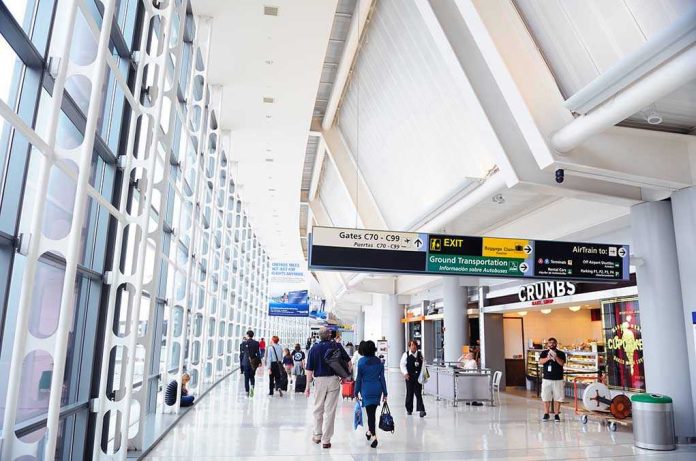
When an aircraft tail strike at 170mph can bring one of the world’s busiest airports to a standstill, questions arise about aviation safety and operational resilience.
Story Highlights
- A DHL Airbus A300 experienced a dramatic tail strike at Heathrow.
- The incident caused runway closures and significant flight disruptions.
- Weather conditions and operational challenges contributed to the event.
- Authorities and industry experts are investigating the cause.
The Incident at Heathrow
A DHL Airbus A300 cargo aircraft, during a landing attempt at London Heathrow Airport, suffered a tail strike at approximately 170 mph. The event occurred on October 12, 2025, when the aircraft encountered a gust of wind about 40 feet above the ground, leading to a destabilized approach. The tail strike occurred as the aircraft’s left main gear touched down first, followed by a sharp nose-up pitch, causing the tail to strike the runway at high speed. This incident resulted in significant operational disruption at Heathrow.
Emergency services swiftly responded to the scene, leading to temporary runway closures and flight delays. The quick action by emergency teams ensured the runway was cleared and inspected before being reopened. The aircraft was towed for further inspection, revealing significant tail damage but, fortunately, no injuries were reported. The crew of the DHL flight is cooperating with ongoing investigations led by the Civil Aviation Authority (CAA).
Operational Challenges and Response
Heathrow Airport, as the UK’s busiest aviation hub, plays a critical role in international air logistics and passenger travel. The tail strike incident, exacerbated by gusty weather conditions, highlighted the challenges faced by large cargo aircraft during landing. Tail strikes, while not unheard of, are rare at major airports and can lead to significant operational impacts, as seen with the closures and delays experienced at Heathrow.
The weather conditions on the day of the incident contributed significantly, with gusts destabilizing the approach. The CAA is investigating the incident to understand the contributing factors, ensuring future safety measures are robust. This investigation will likely examine the crew’s decision-making process, particularly the go-around protocols in adverse weather conditions, and the overall handling of large freighters like the A300.
Impact and Industry Implications
The incident at Heathrow airport not only caused immediate delays and inconvenience to passengers but also had broader implications for the aviation industry. Short-term impacts included flight diversions, delayed cargo shipments, and airport congestion. Long-term, this event may lead to increased scrutiny of cargo operations at major passenger hubs, especially concerning landing protocols in challenging weather.
Industry experts emphasize the rarity of such high-speed tail strikes and the importance of maintaining stabilized approach criteria. Aviation analysts suggest this incident could prompt a review of training programs for cargo aircraft crews and potential adjustments to operating procedures during adverse weather conditions. The reputation of both DHL and Heathrow could face challenges as they work to address the incident’s fallout and reassure stakeholders of their commitment to safety.
Ongoing Investigations and Safety Measures
The CAA’s ongoing investigation aims to uncover the precise causes of the tail strike and provide recommendations to prevent similar occurrences. With DHL pledging full cooperation, the focus remains on understanding the incident’s dynamics and ensuring compliance with safety standards. The outcomes of this investigation may influence regulatory policies and operational practices across the aviation sector.
Heathrow Airport’s management is actively working to restore normal operations while communicating updates to passengers. The incident serves as a reminder of the complexities involved in airport operations, especially in adverse weather conditions, and the importance of coordinated responses from all stakeholders, including airlines, airport authorities, and regulatory bodies.
Sources:
News report on the disruption and operational impact at Heathrow



